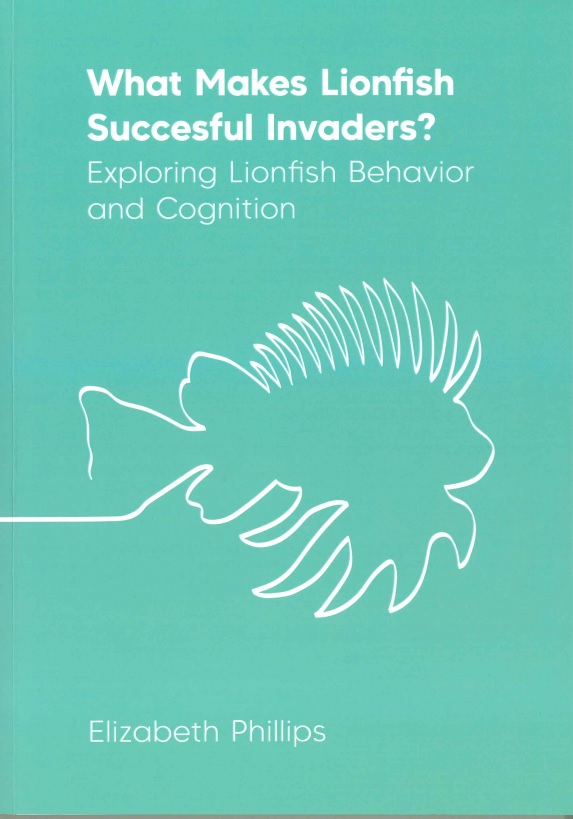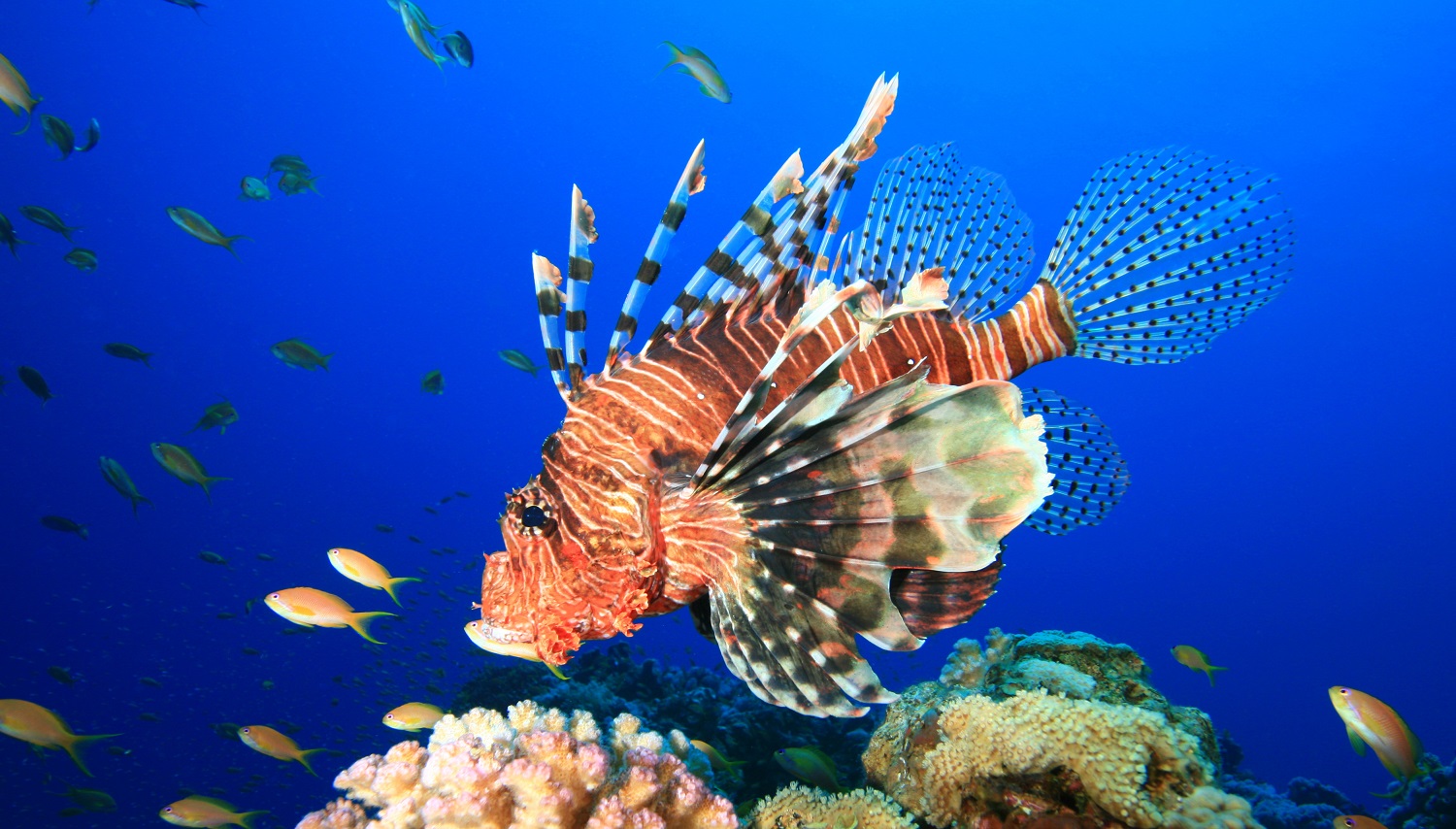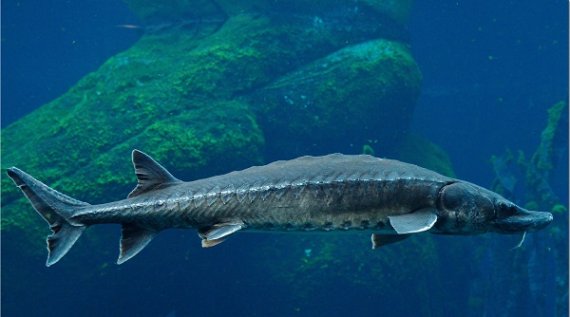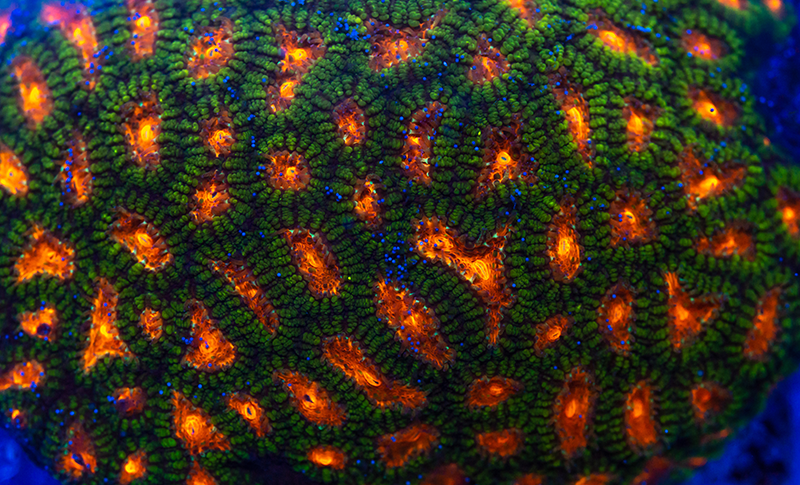The lionfish does not just do well in aquariums; the tropical fish with its striking (and venomous) spines is also one of the most successful invasive exotic species in the world’s oceans. How does this creature manage that? Perhaps it is because the fish sees both colours and ultraviolet (UV) when it is hunting for appropriate prey, suggests PhD candidate Elizabeth Philips.
The lionfish normally goes hunting at dusk and at night, when an ability to see colours doesn’t help much. But there are signs the fish also hunt during the day. ‘And being able to see colours is an advantage if you are out hunting then,’ says co-supervisor Alexander Kotrschal. ‘Coral reefs are full of colour, and the fish that live in them are usually brightly coloured too. UV light in particular is important.’
Secret communication
Many coral reef fish use UV to recognize one another. Kotrschal: ‘They have UV markings on their body that they use to communicate passively. The colour pattern is often the only feature that distinguishes one fish from another. Most daytime predators in coral reefs can’t see UV light, so the UV serves as a kind of secret communication channel for reef fish. If the lionfish can hack into that channel, that might explain why it is so successful in hunting small fish.’
Most daytime predators in coral reefs can’t see UV light
Alexander Kotrschal, Behavioural Ecology Group
To prove the lionfish have colour vision, Philips first demonstrated they have the right equipment to let them see colours. Genetic analysis showed these fish have genes that code for several photoreceptors, the proteins in the retina that respond to light. But that alone is not enough. Kotrschal: ‘It could be an evolutionary legacy, so you have to show the fish does something with that visual information.’

Philips therefore carried out behavioural experiments. She bought several lionfish in a pet shop (and gave them names like Jaws, Luther, Nala, Sarabi, Scar and Simba) and taught them to distinguish between blue and green using a classical conditioning test (giving a reward for the desired behaviour). She used the same approach to test their ability to see ultraviolet.
So lionfish are able to use colours and UV when hunting prey. But do they do so in practice? And does this ability explain their success as a colonizer in the Mediterranean, which doesn’t have any coral reefs? Kotrschal says that still needs to be investigated. A new PhD candidate is now assessing the impact of lionfish on biodiversity in the Mediterranean.
Not dangerous
If anyone is having second thoughts about swimming in a sea full of lionfish this summer, Kotrschal can put their mind at rest. ‘If you leave them be, the fish are not dangerous at all. The spines may look dangerous, and they are indeed venomous, but I have never heard of anyone not messing with them being stung. The lionfish can’t actively stab you. You are also not likely to step on them by mistake as they normally swim at depths of more than three metres.’
Elizabeth Philips received her PhD on 7 May. She was unable to talk to Resource herself due to circumstances.

 Photo Shutterstock
Photo Shutterstock 

